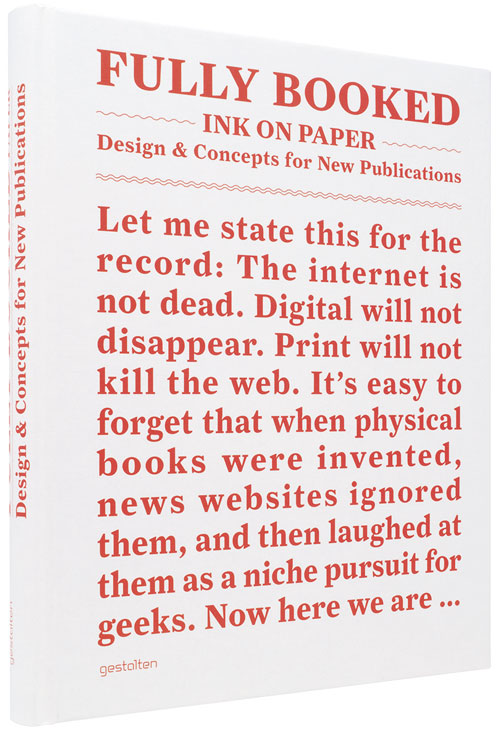“This is an important and wonderful time to be a writer, a storyteller, a designer, a reader.”
 “The mind, the brain, the top of the tingling spine, is, or should be, the only instrument used upon a book,” Nabokov wrote in his treatise on what makes a good reader. And yet, as the future of storytelling hangs in anxiety-inducing uncertainty and the question of how to read a book continues to evolve its answers, analog books are challenged to reinvent themselves in marvelous ways and the value of exceptional book design is celebrated with rising reverence. There is something increasingly reassuring today about the physicality of print books, about using one’s hands and fingers as well as one’s mind and brain as the instruments of reading.
“The mind, the brain, the top of the tingling spine, is, or should be, the only instrument used upon a book,” Nabokov wrote in his treatise on what makes a good reader. And yet, as the future of storytelling hangs in anxiety-inducing uncertainty and the question of how to read a book continues to evolve its answers, analog books are challenged to reinvent themselves in marvelous ways and the value of exceptional book design is celebrated with rising reverence. There is something increasingly reassuring today about the physicality of print books, about using one’s hands and fingers as well as one’s mind and brain as the instruments of reading.That’s precisely what the fine folks of Gestalten — who have a knack for pictorial magic, visual storytelling, and art as sensemaking — explore in Fully Booked — Ink on Paper: Design and Concepts for New Publications (public library). Lavishly produced and beautifully art-directed, this gorgeous large-format tome — though regrettably too Western-centric to include such gems as the stunning handmade books of Indian indie powerhouse Tara Books — is as much a showcase of exceptional and innovative books by designers from around the world as it is a living manifesto for the very subject of its celebration.
In the introduction, which begins on the book’s very cover, Andrew Losowsky presents an irreverent and brilliant in its perspective-shifting quality reversal of media history:
Let me state this for the record: The internet is not dead. Digital will not disappear. Print will not kill the web. It’s easy to forget that when physical books were invented, news websites ignored them, and then laughed at them as a niche pursuit for geeks. Now here we are and the same journalists are declaring the death of Internet, as the hype and excitement surrounding print and paper travels inexorably around the world. News companies have even rushed into creating news-papers, long before any clear business model has emerged to pay for them. We are in a print world now.He concludes by peeling away at the essence of what this irreverent satire — like all great truth-telling satire — bespeaks:
It has changed so many things in our lives that it can be hard to remember a time before print, when everything was digital. Yet doing so is the only way to understand exactly why and how print became so important, so quickly.
Of course, when the first companies started to print books, they were pale imitations of the on-screen experience, near-perfect reproductions of the visual language of digital without any of its functions or its essence. People who grew up with digital laughed at these early iterations, dismissing the idea that print could ever have a value beyond being a pale echo of the digital reading experience. They would never, they swore, read a book printed on paper. It simply wasn’t the same experience as that with which they’d grown up.
However, print began to take off among the elderly and the young, the former embracing the simplicity and highly limited demands of interactivity offered by print, while the latter came quickly to understand the near-limitless freedoms granted by physical ownership.
Everything in this book is a physical expression of print storytelling, gloriously non-digital and proud of the fact. Indeed, stories told in these ways would not work on a screen — even though most, if not all of them could not have been created without computers.
[…]
The very best in print books teach us what it is like to reach out and touch a story, to hold it in our hand, to interact with it in a personal, physical, uninhibited way.
This is an important and wonderful time to be a writer, a storyteller, a designer, a reader.
Long live print.
More
No comments:
Post a Comment